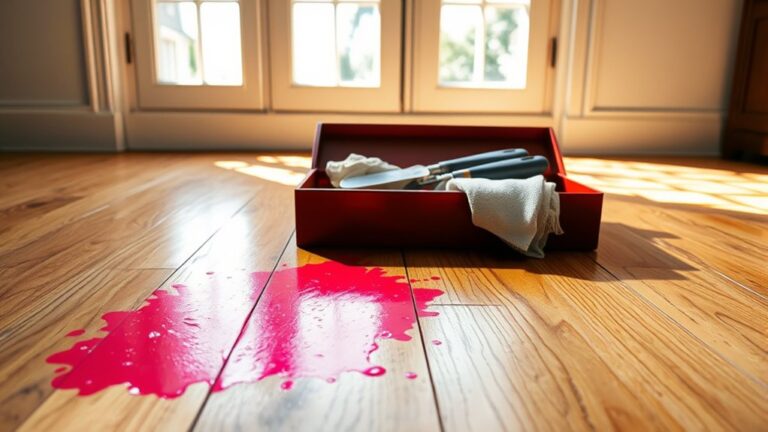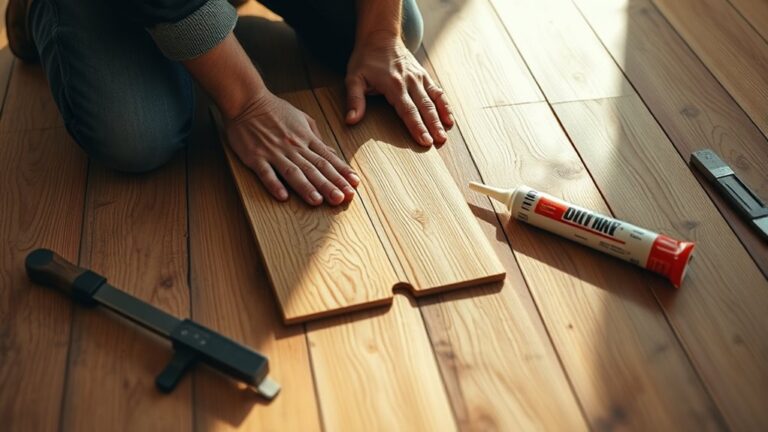If you notice sagging floors in a house, you should first identify the cause—like wood rot, pests, or foundation shifts—and assess severity using proper tools. Understand repair costs, which vary widely, and how these issues impact structural integrity and home value. Neglecting thorough inspection risks future expenses and safety. By examining these factors carefully and considering professional assessments, you can make a more informed decision about the purchase and negotiation strategy needed.
Common Causes of Sagging Floors
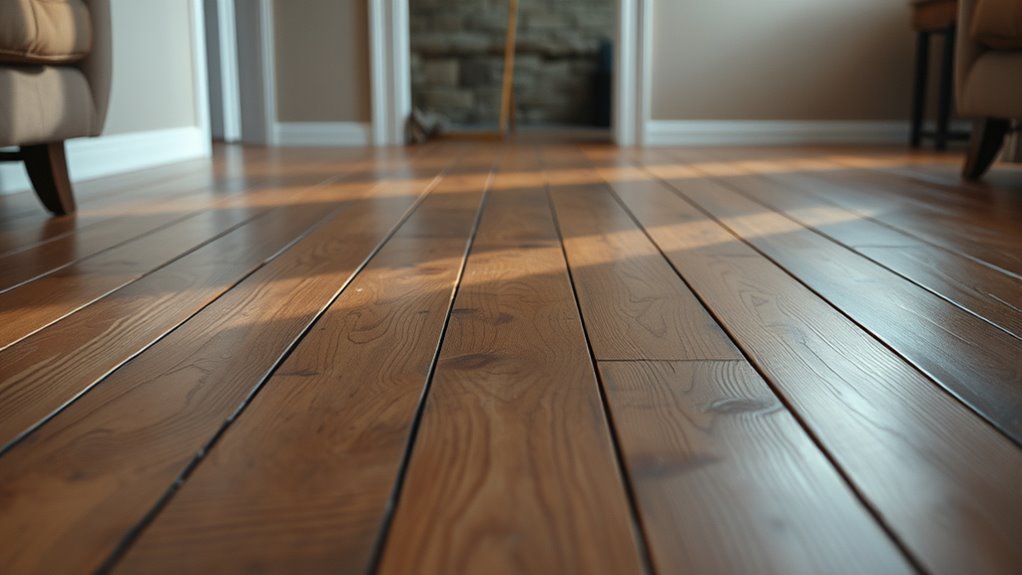
Although sagging floors might seem like a straightforward issue, their causes can vary widely, affecting the severity and required repairs. You need to understand that wood rot is a primary culprit, often resulting from prolonged moisture exposure that weakens structural integrity. This decay compromises the vloer joists, causing noticeable sagging. Additionally, pest infestation—particularly termites and carpenter ants—can severely damage wooden supports by hollowing them out, undermining load-bearing capacity. Both factors often coexist, accelerating deterioration. Identifying the root cause is essential since wood rot might require moisture control and replacement of damaged timber, whereas pest infestation demands thorough extermination and repair. By grasping these underlying issues, you gain the freedom to make informed decisions about the risks and potential remediation involved in purchasing a property with sagging floors.
Signs to Identify Sagging Floors in a Home
Understanding the causes of sagging floors helps you recognize the physical indicators that signal structural issues. During a thorough floor inspection, watch for uneven surfaces, noticeable dips, or areas where the floor feels spongy underfoot. Check door and window frames near the floor; if they stick or fail to close properly, it’s a clear sign of floor movement. Look for visible cracks in walls adjacent to the floor or gaps between floorboards, which often accompany sagging. These signs guide your assessment and inform renovation tips, ensuring you address underlying problems rather than cosmetic fixes. Being precise in identifying these indicators empowers you to make informed decisions, preserving your freedom to renovate confidently and avoid costly surprises later.
Structural Implications of Sagging Floors
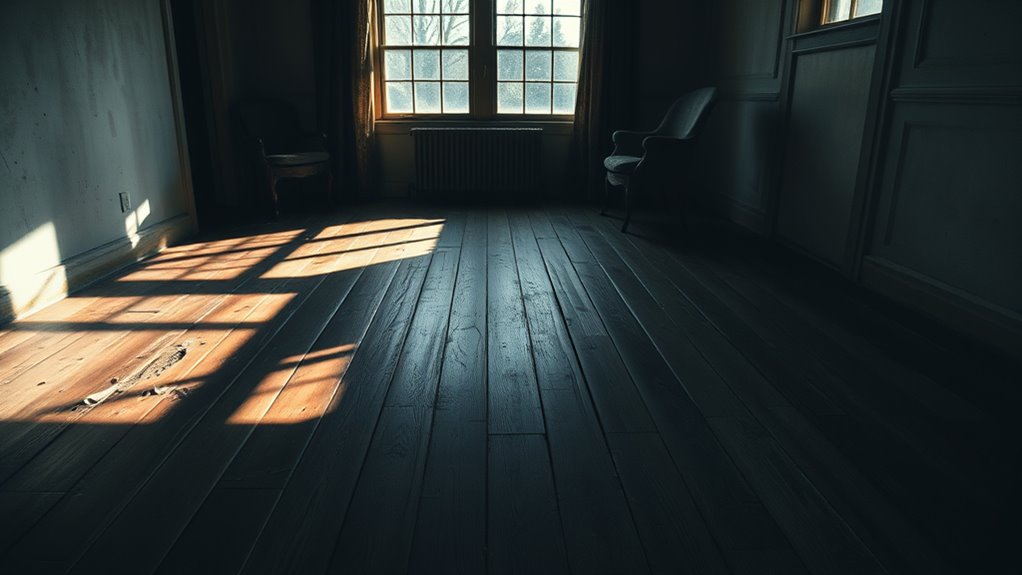
When floors start to sag, it often signals compromised structural integrity that can affect the entire building framework. Sagging disrupts proper load distribution, causing stress concentrations that may lead to further damage or failure. This can limit your freedom to modify or expand the home safely.
| Structural Concern | Potential Effect |
|---|---|
| Compromised joists | Reduced floor stiffness |
| Uneven load distribution | Increased stress on supporting walls |
| Foundation shifts | Risk of cracks and instability |
Understanding these implications helps you gauge the risk involved. Sagging floors aren’t just cosmetic—they indicate underlying issues threatening the building’s stability. Before committing, consider how these structural challenges could limit your ability to freely use and adapt the property over time.
How to Assess the Severity of Floor Sagging
To assess floor sagging severity, start by identifying its root causes, such as joist damage or foundation shifts. You’ll need to measure the sag accurately, typically by comparing floor heights at multiple points with a level or laser tool. This data helps determine whether repairs are minor or require structural intervention.
Identifying Sagging Causes
Although sagging floors can signal serious structural issues, determining their cause requires a systematic assessment of visible signs and underlying conditions. You need to identify specific sagging indicators that compromise floor stability, such as uneven joists or moisture damage. Begin by examining:
- Joist integrity: Look for cracks, splits, or rot that weaken support.
- Subfloor condition: Check for water stains or warping indicating prolonged exposure to moisture.
- Foundation shifts: Observe any settling or cracks in the foundation that might transfer stress to the flooring system.
Measuring Sag Severity
Three key measurements help you accurately assess how severe floor sagging is: the depth of the sag, the length over which it occurs, and the location relative to floor joists. Start by using sag measurement techniques such as a straightedge or laser level to quantify vertical deflection at the sag’s deepest point. Measure the span of the sag across the floor to determine if it’s localized or widespread, which influences repair complexity. Identifying the sag’s position relative to joists helps pinpoint structural weaknesses or damage. Combining these measurements provides a clear picture of deflection severity. From there, you can evaluate appropriate floor leveling methods—whether shimming, sistering joists, or more extensive structural reinforcement—to restore floor integrity and guarantee your freedom from future costly repairs.
Potential Costs for Repairs and Reinforcement
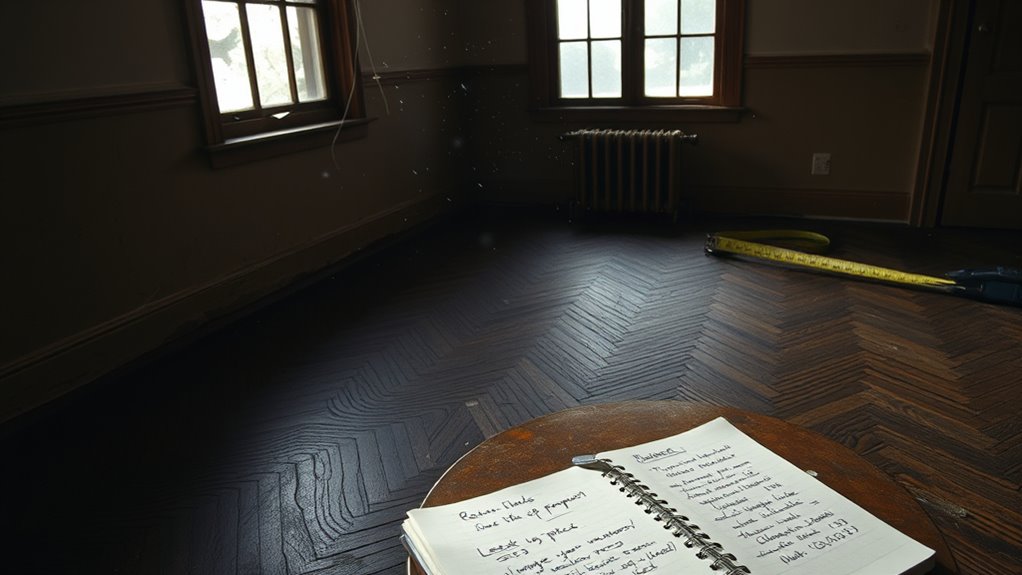
You’ll need to evaluate repair cost estimates carefully, as sagging floors often require extensive labor and materials. Consider structural reinforcement options like sistering joists or installing additional supports, which can vary greatly in price. Understanding these factors will help you gauge the financial impact before committing to the purchase.
Repair Cost Estimates
Repair costs for sagging floors can vary considerably depending on the underlying cause and the extent of damage. When evaluating repair techniques, you’ll want to take into account several cost factors that influence the final estimate. These include the materials needed, labor complexity, and any necessary subfloor replacement. Typically, costs may range widely based on these variables.
- Minor joist reinforcement or sistering can cost between $500 and $1,500.
- Subfloor repairs involving replacement might run from $1,000 to $3,000.
- Extensive damage requiring structural beam replacement can exceed $5,000.
Understanding these cost factors allows you to project expenses more accurately and decide if the repair aligns with your financial freedom goals. Accurate estimates guarantee you’re prepared for the investment sagging floor repairs demand.
Structural Reinforcement Options
Although sagging floors can stem from various structural issues, addressing them often involves targeted reinforcement techniques that restore stability and prevent further damage. When considering foundation support, you might need underpinning methods like helical piers or concrete pilings to stabilize soil movement effectively. Beam reinforcement typically involves sistering new beams alongside existing ones or installing steel flitch plates to increase load-bearing capacity without extensive demolition. Costs vary widely based on the severity of the sag and materials used, but expect foundation support solutions to range from $5,000 to $15,000, while beam reinforcement can cost between $1,000 and $5,000. By investing in these precise structural corrections, you maintain your home’s integrity and protect your freedom from future costly repairs or restrictions.
When Sagging Floors Indicate Foundation Issues
When sagging floors are present, they often serve as a critical indicator of underlying foundation problems rather than mere cosmetic issues. You’ll want to conduct a thorough foundation assessment before moving forward. Key signs include:
- Uneven floor joists or beams, which suggest structural shifts.
- Cracks in walls or near the foundation, indicating stress points.
- Doors and windows that no longer align properly, reflecting frame distortion.
Identifying these symptoms helps you evaluate repair considerations accurately. You’ll need to determine if the foundation requires stabilization, underpinning, or replacement. Ignoring sagging floors can exacerbate structural damage, limiting your freedom to modify or sell the home later. A precise diagnosis empowers you to make informed decisions about purchase and renovation, ensuring you’re not locked into costly fixes down the line.
Impact of Sagging Floors on Home Value
Understanding the underlying foundation issues tied to sagging floors is only part of the equation; you also need to evaluate how these structural concerns influence the home’s market value. A thorough impact assessment helps you gauge depreciation risks amid market fluctuations, empowering you to make an informed decision. Sagging floors signal potential repair costs, often lowering the property’s appeal and resale price.
| Severity Level | Estimated Value Reduction | Typical Buyer Concerns |
|---|---|---|
| Minor | 5-10% | Cosmetic fixes, minor repairs |
| Gematigd | 10-20% | Structural stability questions |
| Severe | 20-35% | Foundation overhaul needed |
| Critical | 35%+ | Safety and habitability risks |
Negotiating Price With Sagging Floor Concerns
Since sagging floors directly affect a home’s structural integrity and market value, you’ll need to factor repair costs and potential risks into your price negotiations. Begin by obtaining detailed repair estimates from qualified contractors to quantify the scope and expense of necessary work. This data empowers you to approach price negotiation with factual leverage. Key strategies include:
- Presenting repair estimates as a basis for requesting a price reduction or seller concessions
- Evaluating the risk of underlying issues that might elevate future costs beyond initial estimates
- Considering contingencies in the contract that protect your interests if additional structural problems emerge
Tips for Hiring a Professional Inspector
Choosing the right professional inspector is critical to accurately evaluating sagging floors and underlying structural issues. You should verify inspector qualifications, ensuring they hold relevant licenses and certifications in structural assessments. Experience with similar properties is essential, as it guarantees familiarity with common causes of floor sagging. Request a detailed inspection checklist beforehand to confirm the thoroughness of the evaluation, covering floor joists, subfloor integrity, and foundation conditions. During the inspection, ask for clear documentation, including measurements and photographic evidence. This analytical approach empowers you to make informed decisions, preserving your financial freedom and mitigating unforeseen risks. By selecting a qualified inspector who employs a thorough inspection checklist, you secure an accurate assessment that forms the foundation of your buying strategy.



